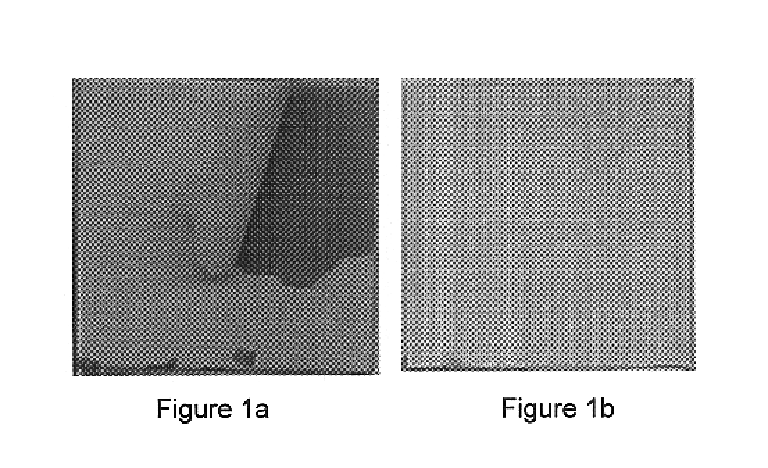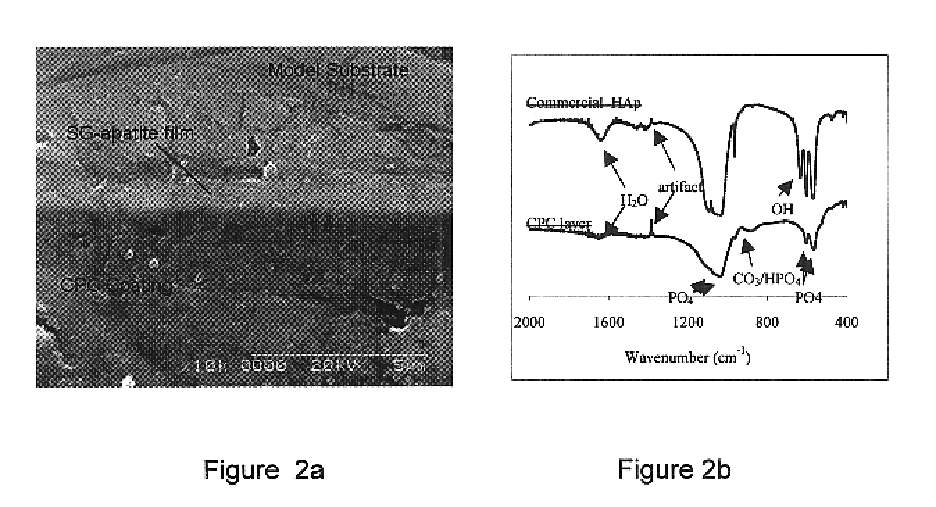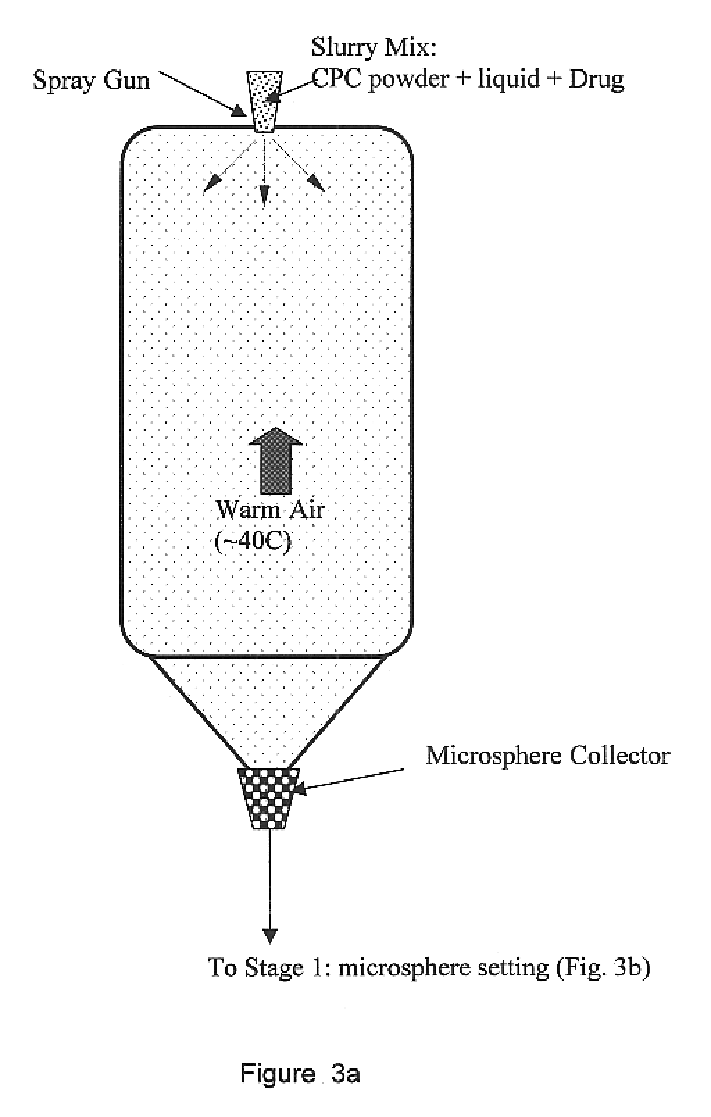Biofunctional hydroxyapatite coatings and microspheres for in-situ drug encapsulation
a technology of hydroxyapatite coating and in-situ drug encapsulation, which is applied in the direction of prosthesis, inorganic non-active ingredients, metabolic disorders, etc., can solve the problems of insufficient heat dissipation, inability to process fast setting functional gradient cement microspheres and coatings with in-situ drug encapsulation, and increase in the temperature of the cemented area
- Summary
- Abstract
- Description
- Claims
- Application Information
AI Technical Summary
Benefits of technology
Problems solved by technology
Method used
Image
Examples
example 1
CPC-HA / SG-HA Coatings on Stainless Steel
Stainless steel metallic substrates (316 L) were coated with a 0.6-0.8 .mu.m thin layer of apatite (SG-HA) using the recently developed sol-gel technique. Specifically, the sol-gel process for preparing a crystallized hydroxyapatite, comprises: (a) hydrolysing a phosphor precursor (phosphite) in a water based medium; (b) adding a calcium salt precursor to the medium after the phosphite has been hydrolysed to obtain a calcium phosphate gel such as a hydroxyapatite gel; (c) depositing the gel on the substrate through dip coating, and (c) calcining the film to obtain crystallized hydroxyapatite, at 400.degree. C. for 20 min. An inorganic colloidal slurry containing calcium phosphate precursor Ca(OH).sub.2 and calcium phosphate salt monocalcium phosphate anhydrate, was ball milled in ethanol. The two starting inorganic ingredients had particle size 0.3-2 .mu.m and 0.5-4 .mu.m, respectively. The initial Ca / P ratio in the slurry was kept at 1.5. As ...
example 2
CPC-HA Coatings on Stainless Steel
Stainless steel metallic substrates (316 L) free of intermediate SG-HA film were coated with CPC-HA, as described in Example 1. During HA incubation period, the coating spontaneously separated from the substrate, as illustrated in FIG. 1a. Obviously, the CPC-HA coating did not bond to the metallic substrate, i.e. bonding strength was zero MPa. Other properties of the coating, that is phase content and porosity, was similar to that obtained in Example 1.
example 3
BM-HA / SG-HA Coatings on Stainless Steel
Stainless steel metallic substrates (316 L) were coated with a 0.6-0.8 .mu.m thin layer of apatite (SG-HA) as described in Example 1. One group of samples was annealed at 400.degree. C. for 20 min to achieve crystalline SG-HA(C) film and another group at 375.degree. C. for 60 min to achieve amorphous SG-HA(A) film. These films were used as nucleation site for precipitation of BM-HA film. The SG-HA coated samples were immersed into "simulated body fluid" (SBF) of ionic composition (in units of mmol / l) 142 Na.sup.+, 5.0 K.sup.+, 2.5 Ca.sup.2+, 1.5 Mg.sup.2+, 103 Cl.sup.-, 25 HCO.sub.3.sup.31 , 1.4 HPO.sub.4.sup.2-, and 0.5 SO.sub.4.sup.2-. The SBF was buffered at pH 7.4 with tris(hydroxymethyl)-aminomethane and HCl. This in-vitro static deposition (i.e. the SBF was not renewed during the deposition period) at .about.24.degree. C. produced good quality, dense 3-5 .mu.m thick BM-HA film deposits on flat SG-HA substrates, as illustrated in FIG. 6. T...
PUM
| Property | Measurement | Unit |
|---|---|---|
| temperature | aaaaa | aaaaa |
| temperatures | aaaaa | aaaaa |
| diameter | aaaaa | aaaaa |
Abstract
Description
Claims
Application Information
 Login to View More
Login to View More - R&D
- Intellectual Property
- Life Sciences
- Materials
- Tech Scout
- Unparalleled Data Quality
- Higher Quality Content
- 60% Fewer Hallucinations
Browse by: Latest US Patents, China's latest patents, Technical Efficacy Thesaurus, Application Domain, Technology Topic, Popular Technical Reports.
© 2025 PatSnap. All rights reserved.Legal|Privacy policy|Modern Slavery Act Transparency Statement|Sitemap|About US| Contact US: help@patsnap.com



